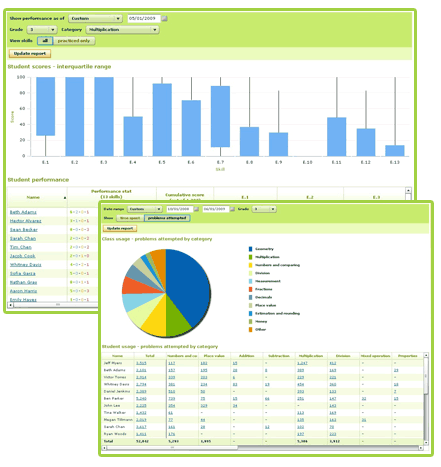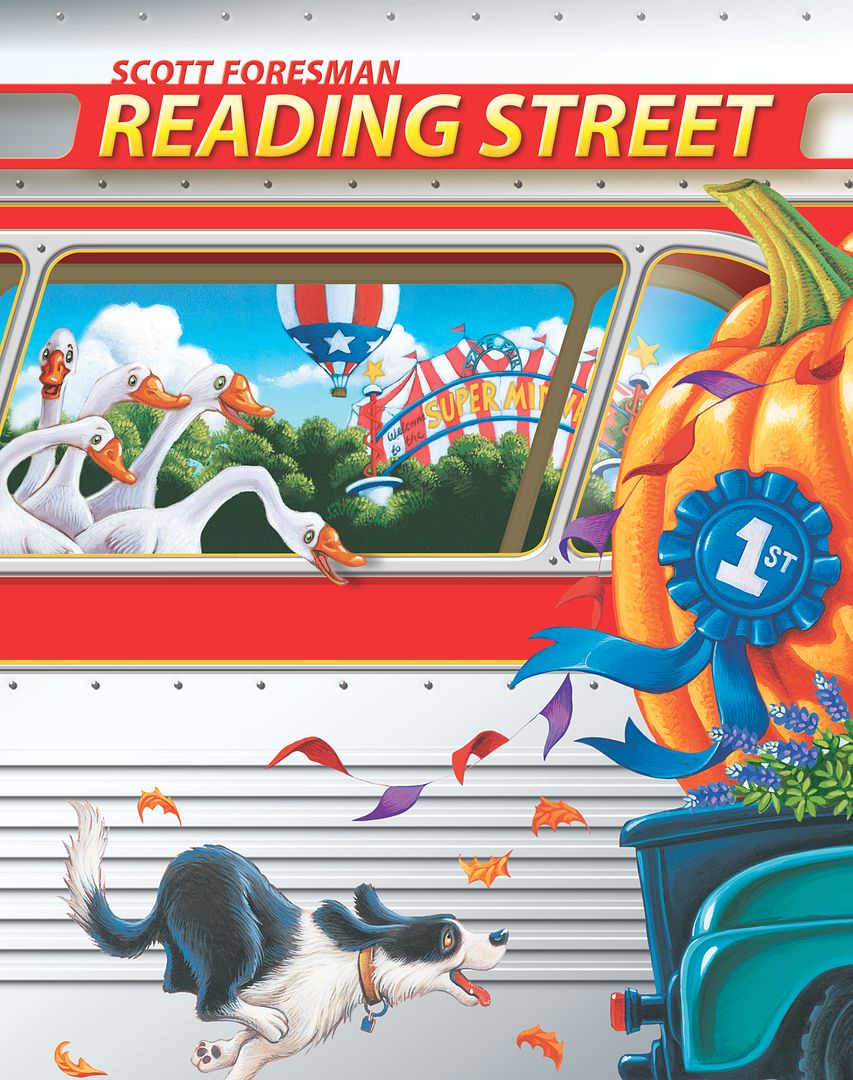I recently received Scott Foresman
Reading Street 5 to review. This is published by Pearson, and is made available to homeschoolers by
Pearson Homeschool.
Reading Street integrates reading instruction with grammar, writing, vocabulary, and spelling. There are 6 units, and each unit is broken down into 6 weeks, providing enough content for 36 weeks of instruction. The homeschool bundle consists of 2 student hardback books, a Teacher Resource DVD-ROM, ExamView Assessment Suite CD, a Guide on the Side, and a Parent Guide. This bundle is priced at $124.99.
- The Parent Guide is a 5 page color pamphlet that explains a bit about each component and encourages the parent to adapt the curriculum to their child.
- The ExamView Assessment Suite CD allows the parent to either use the Reading Street test items included on the CD or create their own tests and exams for their child. There are weekly tests, unit tests, and end-of-year tests provided.
- The Teacher Resource DVD-ROM includes many different teacher helps and worksheets. There are worksheets for each week for spelling practice, grammar review, literature elements, writing, and vocabulary (there are 20 worksheets available for Unit 1 Week 1). There are vocabulary cards for each week. In addition to the worksheets, there are additional practice sheets to be printed that include editing and grammar practice. There are scoring rubrics and Reader's Theater Anthologies.
- The Guide on the Side is a spiral bound guide with teaching helps for the teacher. It includes several tabbed sections: Oral Language, Fluency, Vocabulary/Word Analysis, Comprehension, Writing, Genre/Text Structure, Media Literacy, ELL, and Resources. Each of these tabbed sections are broken down further into small sections that are filled with ideas and guidance for successfully teaching all of the different areas.
- The Student Books are hardback and very colorful. Book 5.1 contains units 1-3 and 5.2 contains units 4-6. Each book begins with an Envision It! Visual Skills Handbook and an Envision It! Visual Strategies Handbook. These are colorful reference pages for the student that focus on key concepts, such as cause and effect, literary elements, inferring, and story structure. The stories and excerpts throughout the text include many different genres, and many are science or social studies related.
When I received this box, I was thrilled to unpack it. The texts are shiny and colorful, and ask to be opened. However, when I sat down to plan this out, I was confused. There are no lesson plans available, because the publishers want you to be able to plan it out specifically for your child. In the Guide on the Side there is a pacing guide that shows what skills are worked on each week. This is helpful, but there are so many parts that it's really hard to figure out how they all fit together. I decided that it would be best if I just jumped right in with Jacob. I'll explain how we used Week 1.
Each unit has an overarching focus. The focus for Unit 1 is "Meeting Challenges". Week 1 focuses on courage, and we discussed courage. The first skills introduced are character and plot. These are defined and explained, and are referenced in the Envision It! Visual Skills Handbook, so we looked them up and studied the page. There is also a comprehension strategy introduced called "Monitor and Clarify", and this is referenced in the Envision It! Visual Strategies Handbook. Next we read the short story, Brave Melissa, and discussed the conflict in the story and how it was resolved, along with how Melissa was courageous. Vocabulary is introduced next and homographs are discussed. The next story, Lifesaving Classes, highlights the vocabulary words and the student is supposed to write a paragraph using the vocabulary words. I didn't have Jacob write the paragraph, but we did discuss the vocabulary words. Next is an excerpt from the book Red Kayak by Priscilla Cummings. There is a Question of the Week: "What inspires people to act courageously?" that the student is to keep in mind while reading. There are questions throughout the reading in the sidebar that are supposed to keep the student engaged in the text, and after the story there are questions that require the student to think about what they've read. Jacob and I discussed these questions orally, and then we read the author's bio together. This is followed by an expository writing assignment, and includes some grammar instruction (on the four kinds of sentences). The last reading assignment for the week is a how-to text called What Will I Do in an Emergency?. The chapter wraps up with fluency exercises (reading with expression), a review of homographs, and an assignment for conducting an interview.
There are 20 worksheets that go along with Week 1. There are spelling worksheets, vocabulary worksheets, worksheets on plot and character, sequencing, the four kinds of sentences, dictionary usage, and a worksheet on written directions. Each of these worksheets enforces a specific skill being taught in the reading textbook. I found it easiest to just print out the worksheets and decided which ones to do after they were all printed. There is definitely enough practice provided.
The Guide on the Side is written more for a classroom teacher than for a homeschooling parent. I didn't use it at all, and don't know if I will. Another disappointment was that there are references to online activities throughout the textbook, but these activities are not available to homeschoolers. They aren't needed, but knowing that the activities are out there makes me feel like we were missing out on something.
Despite the fact I found this complicated and confusing to actually get going, I think it is a good program. It covers a lot of subjects, and I like the way it covers basic literary elements and requires the student to think about and interact with the stories and excerpts. We've never done a textbook reading program, and I wasn't sure what Jacob would think. I asked his opinion, and he told me he really enjoyed it because it made him think. I asked him if he wanted to continue with it, and he said that he did. Finally, I asked him if he wanted to keep at it over the summer or if he wanted to wait until the fall to continue, and he requested to keep working on it over the summer. That's a pretty strong endorsement from a 9 year old boy if you ask me.
If you're looking for a textbook reading program, I would suggest you take a look at Reading Street. You'll need to be prepared to spend some time figuring out a lesson plan, but that time is well worth it.
For more reviews of Pearson Homeschool products (including enVision Math, myWorld Social Studies, MyMathLab Algebra 1 & 2, and additional levels of Reading Street) go
here.

Disclaimer: As a member of the TOS Crew, I received this product, at no cost to me, in exchange for an honest review. All opinions are mine.




